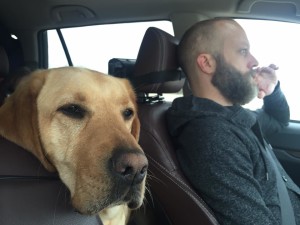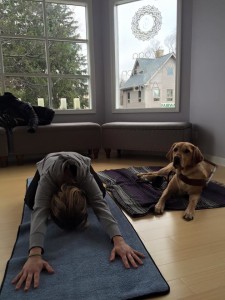After a 4-day cross-country road trip, our family moved into our new home in Southern California last week. Moving into a new space is exciting, as it’s a chance to reorganize, switch out furniture and experiment with new decorating styles. It can be a tad stressful, however, especially for someone with low vision. Learning and memorizing new layouts while trying to figure out the most functional aesthetic way to set up all of your things can feel daunting, particularly when you are accustomed to having a very specific place for each item.
In our case, we had to fit all of our belongings in a 16 ft. storage pod prior to moving, which meant that we had to part with a lot of stuff, including our couches and kitchen table. Hence, we’ve spent the first week both unpacking and re-buying furniture and organizational items. I’ve definitely learned a few things this week that I’d like to pass on to our readers.
Whether you’re reorganizing while spring cleaning or moving into a new home, here are some tips to get you started:
1 – Clear the floors of all clutter. Visually impaired or not, visual clutter sucks the life out of life. During the first few days here, I kept tripping over shoes, leashes and purses (most of which were mine!), as all of these items seemed to congregate in our living room by the front door. I knew that tossing all of our shoes into the small hall closet would be disastrous when it came time to locate the shoes and head out the front door. So we just kept leaving the shoes out, but even when they were nicely lined up by the door, they were taking up coveted floor space and stressing me out (first world problems, I know!) On one particularly cranky evening, on our 4th or 5th evening here, I grabbed my purse and announced, “I’ve had enough of this! We’re going out shopping and not returning without a hanging shoe rack!” And now our shoes hang quietly in the closet, not daring to bother this clutter buster.
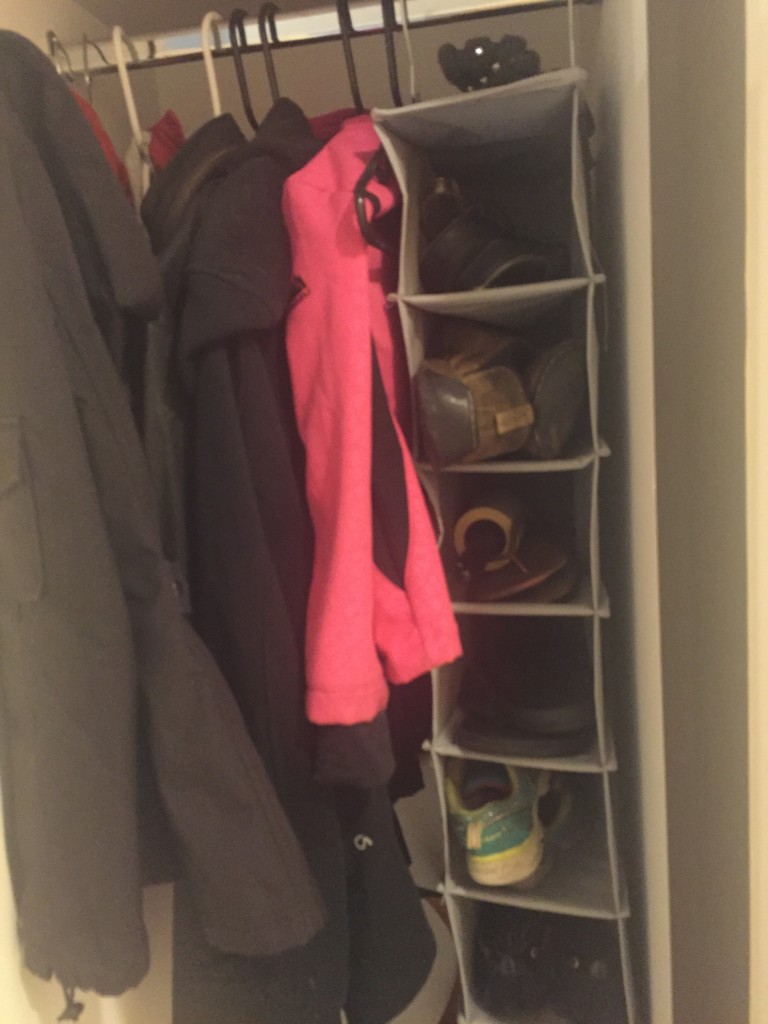
2 – Call in the troops! Fortunately, my parents came to town the day after we moved in, so they were with us for the first week’s transition and helped out a TON! Whether helping to set up shelving, playing with the kids, or unpacking and organizing bins, they definitely earned their “free” room during their 11-day visit! If you have neighbors, friends or family who are willing to lend a hand, take them up on it! And don’t be shy about reaching out to ask for help. Moving is not the time for prideful independence!
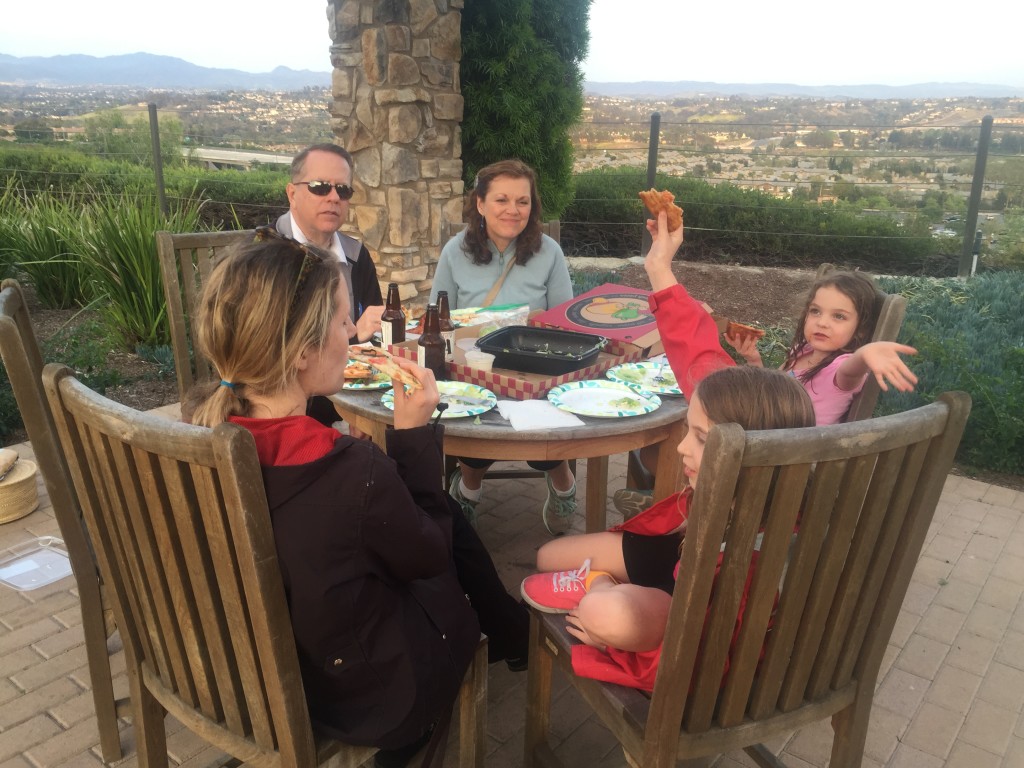

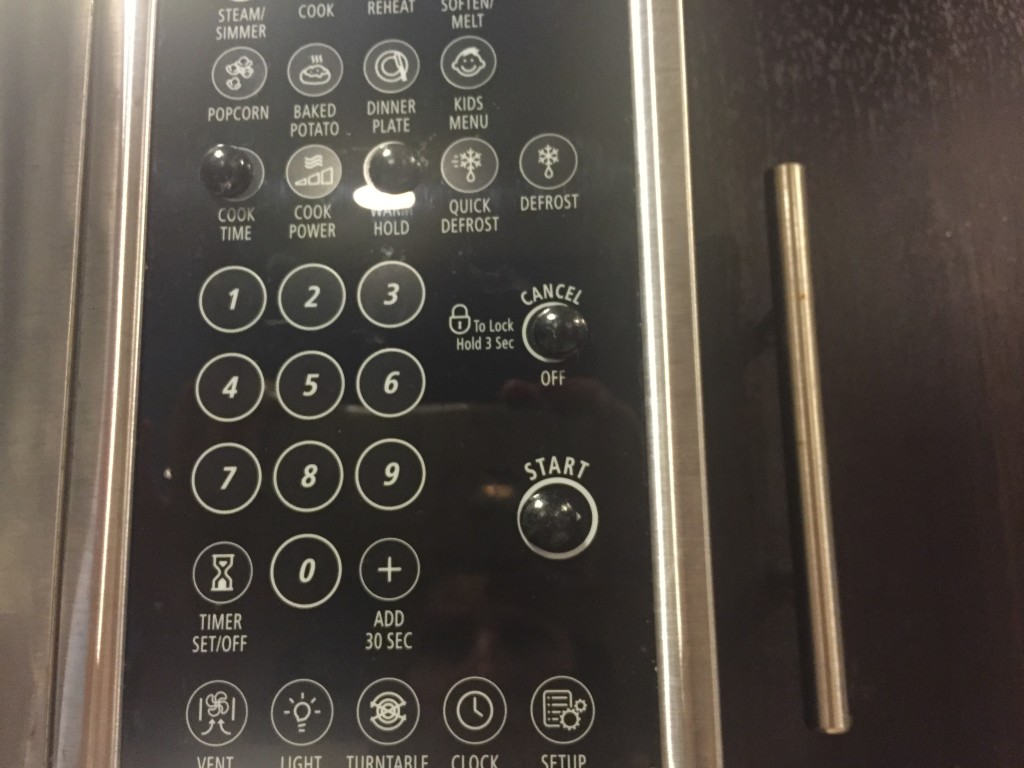
3 – Make shelving a priority. In an expensive, population-dense area like SoCal, every inch of space matters. Even though we were accustomed to living in a small house in Illinois and are renting a decent-sized townhouse, we lost our basement and barn storage, so we’re relying heavily on our 2-car garage here (the upside of being a one-car family!). My husband got some awesome, inexpensive shelves from Lowes, which have helped us get organized. Shelving is always worth the extra money and effort because you can’t put a price tag on sanity!
4 – Tactile bumps are your appliances’ best friend. Learning to operate my new appliances was one of my biggest visual challenge, which is probably why I waited several days before even attempting to tackle it (seriously, my parents did 5 or 6 loads of laundry the first several days here before I even ventured to find the lightswitch to the laundry room!) Once ready, however, I mastered my appliances rapidly, one-by-one, beginning with the washer and dryer. Since our previous basement washer and dryer were around 50 years old with no bells and whistles, the new sounds that chirped out of these appliances left me both intimidated and exhilarated. Fortunately, none of them are touch-screen, so tactile bumps placed on certain key buttons are the perfect accessible solution. My mom carefully went through each button and setting with me, and I scoured over them as if preparing for an exam (those pop laundry quizzes really sneak up on you) I put raised tactical stickers on the settings I would be choosing most often and memorized the buttons in between those. And then I moved on to the kitchen, where my dad walked me through the stove, oven and microwave. Since I have a double oven for the first time in my life, I felt pretty crafty putting all round raised dots to symbolize buttons that coincided with the top oven and square-shaped bumps for buttons associated with the lower oven. The microwave was a bit trickier at first, but after affixing stickers to certain numbers, cook time, and the start button, it too became a cinch. The dishwasher buttons proved to be the trickiest, as they’re located on top of the door where it closes, so raised bumps were not an option. But the buttons themselves were slightly raised, and the “normal” cycle is 3 in from the left, and the “dry” button is 3 in from the right, so those ended up being easy to memorize. I honestly don’t know what I’d do without these tactile bumps to orient my fingers and brain….such a simple accommodation that makes a huge difference!
5 – Take breaks, be grateful and have fun! Moving is ranked among the top most stressful life events for a reason. It’s hard. You’re relocating a bunch of stuff that you didn’t realize you still had, you’re grieving the loss of neighbors, friends and family that you will no longer see daily, and you’re trying to figure out how to fit things in unfamiliar drawers and cabinets. So be extra kind to yourself. I know it’s cliche, and I am probably the worst example of taking the time to enjoy such tasks, but the few times that someone was able to convince me to take a walk (or an early morning ocean trip!), made such a difference in my energy and stress level.
Gratitude continues to be the way to navigate through any stressful scenario. Yes, there is a new house to figure out, but be thankful that there is a house to figure out. Yes, there are lots of belongings to unpack and organize, but be thankful that there are lots of belongings (or be so fed up that you give a bunch of them away!) And yes, there are lots of changes and transitions to navigate, but be thankful that life would offer such adventure!

